Este post também está disponível em:
Português
English

The municipality of Oeiras, about 300 kilometers from Teresina, holds many surprises for tourists who visit it.
The first capital of Piauí was Oeiras and it concentrates a great historical and religious wealth, translated in its mansions and in the manifestations of faith and religiosity.
Visit the Historical Center of Oeiras, the colonial houses of the 18th and 19th century, among other tourist attractions is to go back to the past. The city’s hotel network is prepared to meet large numbers of tourists.
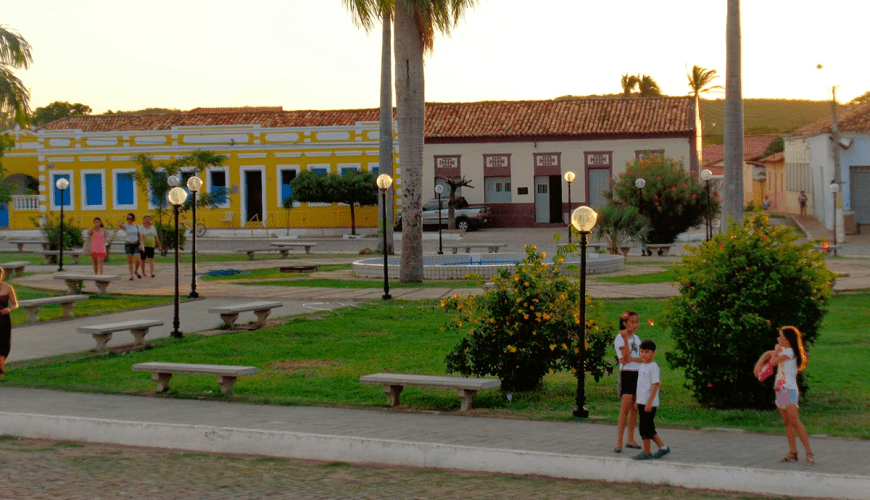
For the historian, Oeiras is considered the oldest nucleus of the Piauí and cradle of the history and colonization of the State. “Here is a bit of the history of Brazil. We still keep collections, buildings and even gastronomy.”, said Stefano.
Videos about Oeiras in Piauí
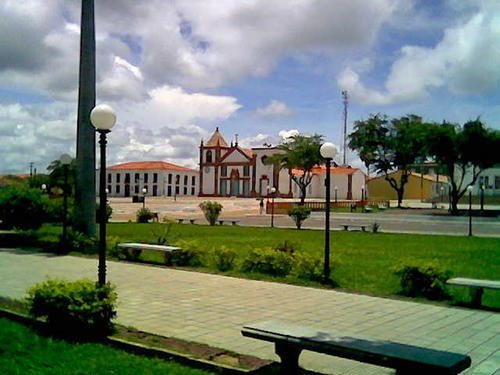

Oeiras Patrimonio Cultural
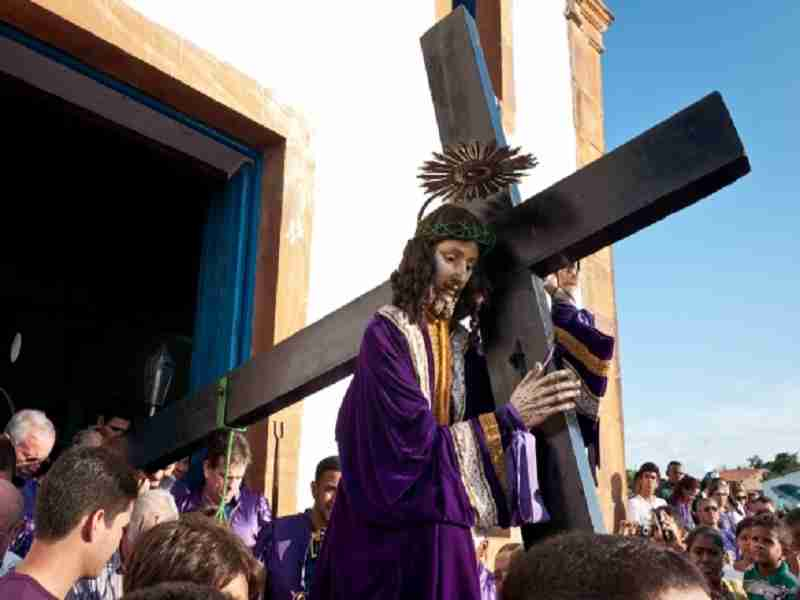
Oeiras - Berço da Fé
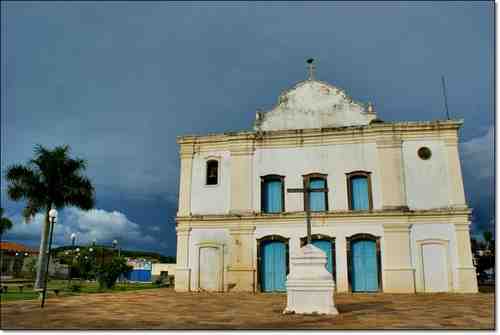
Oeiras fazendas e Religiosidade
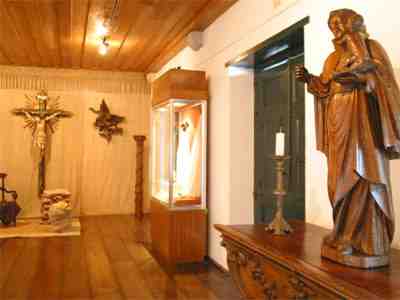
Oeiras Museu de Arte Sacra
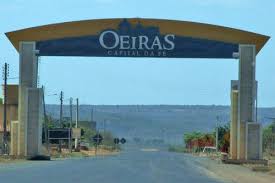
Cidade de Oeiras

História e Arquitetura de Oeiras PI53:32
Religious tourism in Oeiras PI
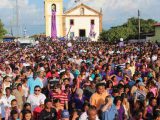
The Holy Week of Oeiras is the largest religious festival in the state, a period in which the city receives the largest number of visitors. In fact, the program begins practically a month before Holy Week. There are masses, vigils, Via Crucis through the streets of the cities and religious sightseeing tours.
The main manifestations are the Procession of Bom Jesus dos Passos, where thousands of people accompany the secular image of Bom Jesus through the streets of the Historic Center, and the traditional Procession of the Fogaréu, accompanied only by men carrying lamps and candles, while the women stay in the igreas praying.
Forty days after Easter, there is the celebration of the Feast of the Divine Holy Spirit. A Portuguese tradition that celebrates the coming of the Holy Spirit upon the apostles.
Oeiras is dressed in red and white. Every year a new home is chosen to house the image of the Divine. The family chosen is the home of the image of the Divine for one year.
History of Oeiras in Piauí

Oeiras had its emergence linked to cattle breeding, since in the mid-seventeenth century, cattle breeding was pushed by the Portuguese crown inland in order to leave the lands near the coast free for the planting of sugar cane.
In 1696, it was elevated to the category of Parish under the invocation of Our Lady of Victory. Later, in 1712, the village of Mocha was elevated to the category of town with the same name, having been installed only on December 26, 1717.
It was designated to be the seat of the new Government, obtaining the title of city by the Royal Letter of June 19, 1761, at which time its name was changed to Oeiras, by act of its first governor João Pereira Caldas, in honor of the Count of Oeiras Portugal, Sebastião José de Carvalho Melo.

Oeiras was the capital of Piauí for 92 years, when Conselheiro Saraiva, then President of the Province, transferred the seat of the State to the newly built Teresina. For its colonial architectural collection, it was declared a National Monument City through Federal Law No. 7745 of March 30, 1989. On January 26, 2012, the Historic Center of Oeiras was listed by the National Institute of Historical and Artistic Heritage (IPHAN), as a Cultural Heritage of Brazil.
Tourist attractions of Oeiras in Piauí
Strolling through the cobblestone streets of Oeiras, 313 km from Teresina, is to experience times you have not lived, times when you were not even born. All this is possible because the city, which is the landmark of Piauí, pulsates memory, rescue, history and understanding of the present in its urban space and mansions everywhere.
According to the Institute of National Historical and Artistic Heritage (IPHAN), the urban ensemble of Oeiras, which was listed in 2012 by IPHAN, presents elements of various architectural currents, such as Luso-Brazilian, immigrant and eclectic architecture. In all, an area with 14 blocks and 235 properties were listed.
And when walking around the city, you can also see characteristics that the Portuguese colonization implanted.
In Oeiras, as Iphan points out, there is a linear conformation with streets structured parallel to the Caminho das Tropas, interconnected by crosswalks of reduced width.
All this also opened the way for the many mansions that are in Oeiras and that today are a trademark and main tourist attractions, not only in the municipality, but throughout the state and Brazil;
And Conheça o Piauí now shows some of these important monuments for you to visit in the first capital of Piauí.
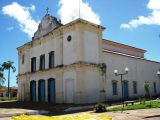
1. Cathedral Church of Our Lady of Victory
Completed in 1733. It is the oldest Catholic temple in Piauí. It replaced the straw chapel of the old Vila da Mocha. Altars in cross arch with baroque finish, in addition to housing rare pieces of Oeiras heritage.
2. Church of Our Lady of the Rosary
Construction of the eighteenth century. Former Chapel of the First Charity Hospital of Piauí.
3. Church of Our Lady of the Conception
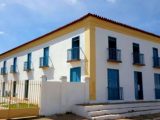
Located in Praça Mafrense, its construction began in the 19th century, however the completion of the works only occurred in 1942.
4. Sobrado Major Selemérico
Built by the President of the Province Zacarias de Góis e Vasconcelos during his government (1845-1847) for residence and dispatches of the presidents of the province. Today it houses the Historical Institute of Oeiras and the Major Selemérico Cultural Center.
5. House of the Viscount of Parnaíba
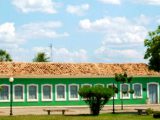
Construction of the eighteenth century, it was the residence of Brigadier Manuel de Sousa Martins, the Viscount of Parnaíba, seat of the Government of the Province.
6. House of the Canon
It was built in 1836, by Brigadier Manuel de Sousa Martins, for his son Canon João de Sousa Martins, who would be the Cure of the Parish of Nossa Senhora da Vitória for many years. It currently functions as a Hotel Pousada.
7. House of Chamber and Jail
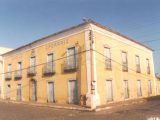
Built by Carlos César Burlamaque, during his stay in the provincial government in the 18th century. For many years it was the residence of Colonel João Batista Ferraz. In the period from 1956 to 1996 it was the headquarters of the Círculo Operário oeirense. Currently the City Hall of Oeiras works.
8. Episcopal Palace
Built in the 19th century by João Nepomuceno Castelo Branco.
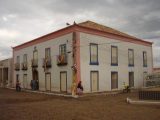
It was the residence of the provincial governors, a school group and an episcopal residence from the 1950s to 1976. Today it is the Museum of Sacred Art of Oeiras (MAS). Grand Bridge over the Mocha stream, its construction dates from 1846, was another undertaking of Governor Zacarias de Góis e Vasconcelos. All in stone and lime, it is the oldest bridge in Piauí.
9. Monument to Our Lady of Victory
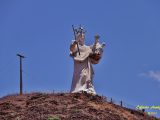
Located in the neighborhood of Oeiras Nova was built by the people and municipal power in 1945.
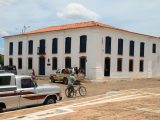
Landmark of the 250th anniversary of the Cathedral Church, 15 meters high and 165 degrees.
From the top of Morro do Leme you can have a panoramic view of the city.
10. House of Gunpowder – Casa da Pólvora
The first military building in Piauí and the third of its kind in Brazil. All made of stone to serve as an arsenal at the time of the captaincy.
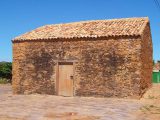
Listed by Iphan, this building dates from the 19th century. As the name says, it really is a house, it only has one room, it is very simple and was built with raw stones mortared with cement mixed with cattle dung. Even after so long, the house is still “standing” with its original structure.
The only thing that has changed is the roof.
Considered as the only military building from the colonial period in Piauí that still exists, Casa de Pólvora is a record, but more than that, it is an objectification of the struggle for independence. The place, which was where the supporters of independence kept the weapons that worked on the basis of gunpowder, is one of the symbols of the emancipation of Piauí from the Portuguese crown.
It is located next to the Pé de Deus and Pé do Cão sites, which have been embedded in the lakeshore since the beginning of colonization.
11. Passeio Leônidas Melo
Built in the 1940s, it includes the Cine tetro Oeiras building, the Commercial Association and Café Oeiras. The buildings are in art décor, but do not contrast with the colonial ensemble.
12. Praça das Vitórias
Its beauty keeps pace with the march of time. It is the scene of many festivities and events that are part of the history of Oeiras.
13. Steps of the Passion
Five chapels scattered throughout the historic center. They have been in the city plan since 1809 and make up the scenery of the via crucis of Bom Jesus.
14. Gallery of the Divine Sacred Deer
Works by various artists from Piauí with reinterpretations and impressions of the Divine Feast of Oeiras. Located in Praça das Vitórias.
15. Sobrado João Nepomuceno
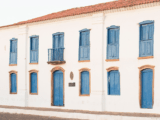
The sobrado was built in 1817 by Captain-General João Nepomuceno de Castelo Branco to be his residence.
But those who see it would never imagine that it was built there for a family home, it looks more like a public institution. And so it was in the future.
Later the sobrado was acquired by the government and housed the municipal intendency and, after a while, it was donated to the diocese for use as the Bishop’s Palace.
Today, the sobrado is the famous Museum of Sacred Art of Oeiras. Housing works from the 18th to 20th centuries, the museum has the collection of the churches Nossa Senhora das Vitórias, Nossa Senhora do Rosário and Nossa Senhora da Conceição, as well as a small part coming from collectors.
Plaster images, polychrome wooden images, crucifixes, candlesticks, benches, confessionals, an altar that belonged to the church of Nossa Senhora do Rosário, among other objects and works make up the old sobrado, the current museum.
16. Sobrado dos Ferraz
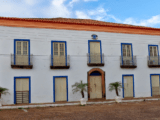
It is the oldest sobrado in Piauí. It was built in 1810 to be the House of Chamber and Jail, with the upper part being used by parliamentarians and the lower part was for prisoners.
When the capital became Teresina, the sobrado was sold to Colonel João Batista Ferraz, who made all the necessary adaptations to be a residence.
In the 1950s, the place was acquired by Father Balduíno. Today, the sobrado is the headquarters of the city hall of Oeiras.
17. Cine Teatro

Built in 1940, the Cine Teatro Oeiras was throughout the time and is still the most traditional house of culture in the city. With a cinema hall and also a theater, the Cine Teatro was listed in 2011 as a historical and artistic heritage.
Over time it has undergone several revitalizations and modernizations, being a place that hosts several socio-cultural events, including musicals, plays and national shows by artists known throughout the country.
These are some of the important secular heritage sites that you can find in Oeiras and all open for visitation. Heritage sites that have resisted time and carry historical marks of a people for the whole state and for the whole country.
Tourism and Travel Guide of Oeiras in Piauí and Northeast Brazil



















